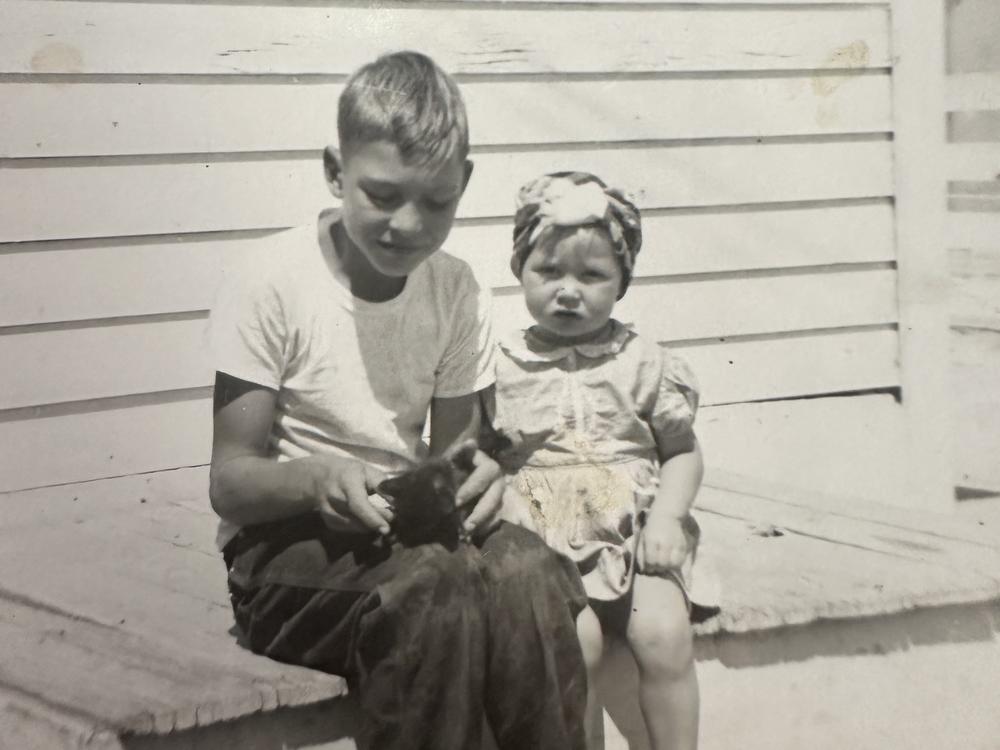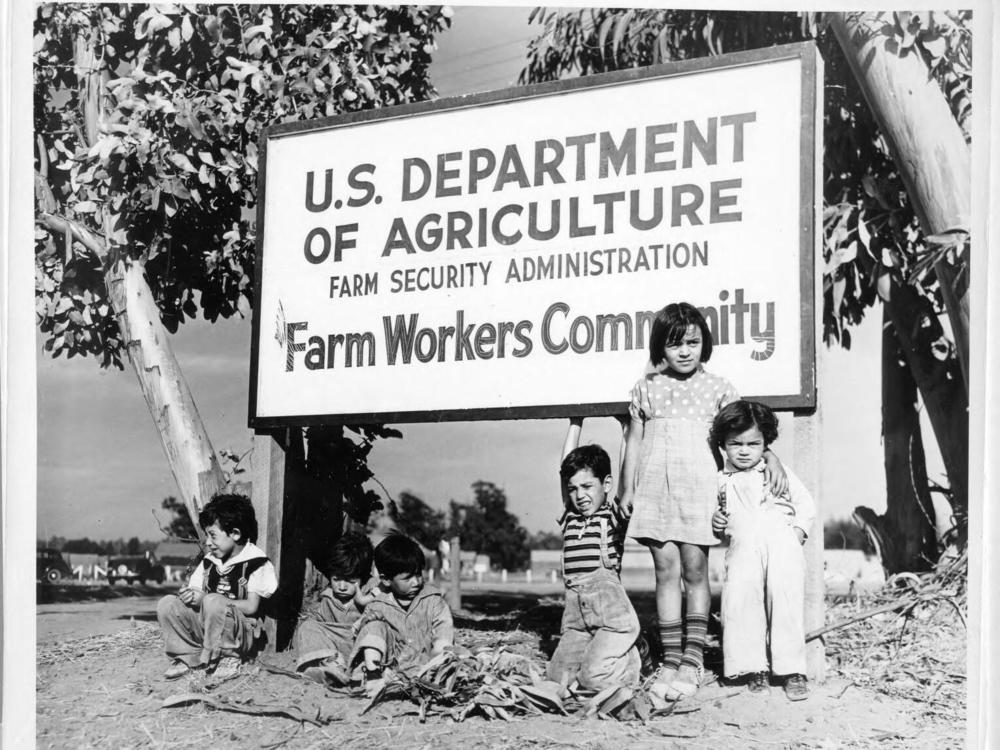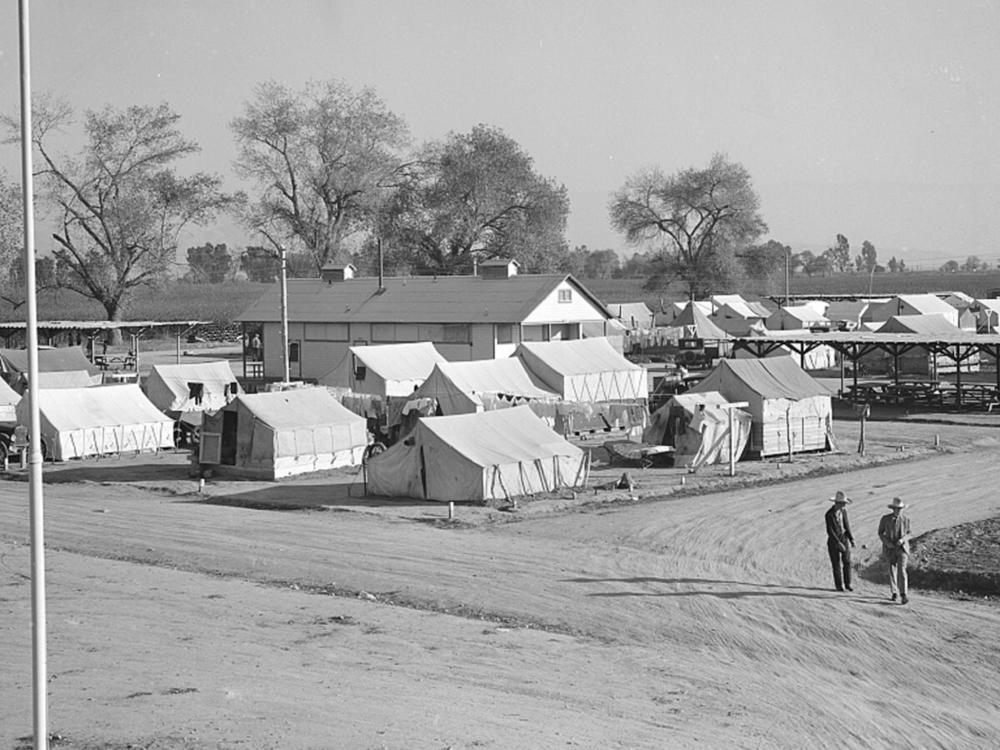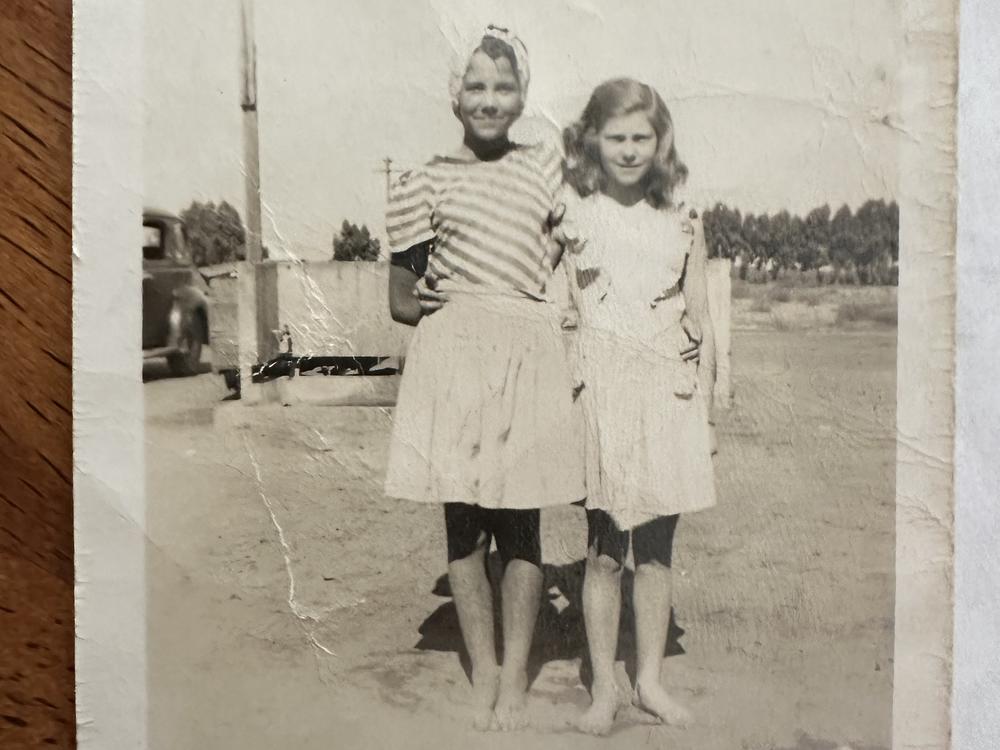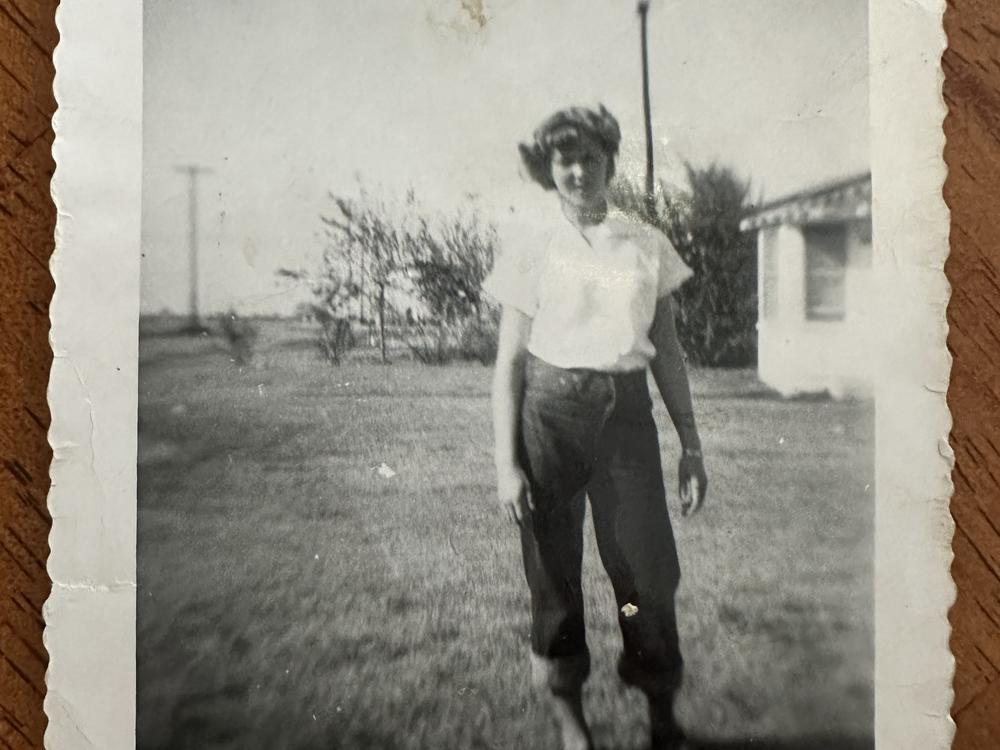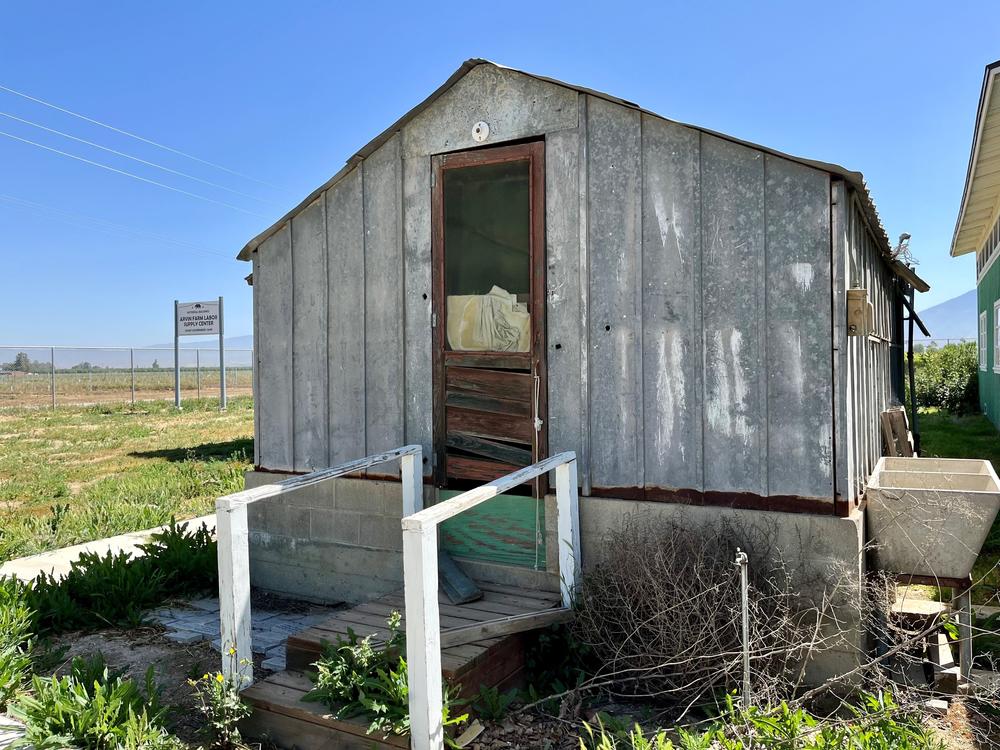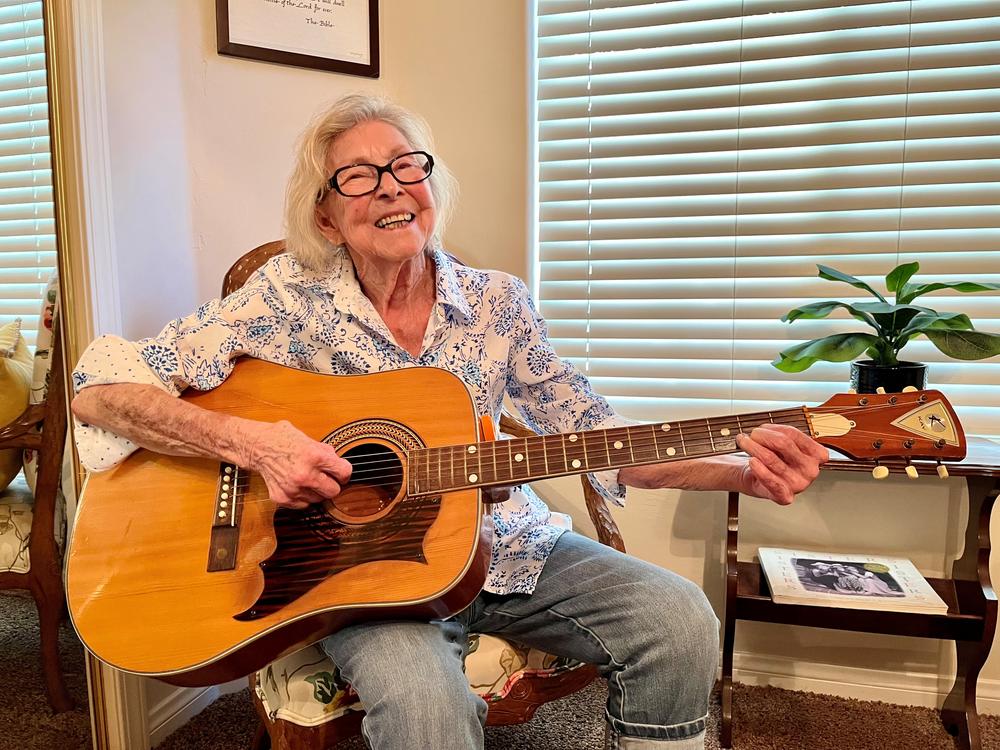Section Branding
Header Content
The story of the American migrant — from Dust Bowl to a new life
Primary Content
Migrant stories have two parts: the leaving of an old life, and the building of a new one.
Pat Rush’s “old life” started in Arkansas. She was born in 1935 and her family worked as laborers picking cotton. It was hard work. By the time she was seven, she was working in the cotton fields too.
“I remember dirt running down my face, snot running out my nose, and I was wet and sweaty,” she told Radio Diaries. “I was a little fat girl and I always had a bad haircut or something. In my mind I thought, ‘There's more to life than being this poor.’”
Rush’s father had died a few years earlier, leaving her mom to raise seven kids on her own. One day her mom made a decision that would change Rush’s life.
“We were picking cotton when Mama just stood up, and I can remember pretty much the words she said: ‘Pick up your sacks, kids, we're going to California.’”
They found a ride and loaded the car with whatever provisions and household items would fit and drove west.
Going to California
Rush and her family left Arkansas in the wake of one of the largest migrations in U.S. history.
During the Dust Bowl of the 1930s, millions of desperate Americans abandoned their homes, farms and businesses to look for work elsewhere.
Though Rush’s family left after the Dust Bowl years were officially over, they took the same path — traveling Route 66, which the migrants called “the Mother Road,” until they reached California.
Rush remembers the day they arrived.
“We stopped there on the road, got out of the car and looked down at the San Joaquin Valley and it was lush green everywhere as far as your eyes could see,” she says. “Oranges and grapes and all kinds of crops. I think we were in awe of it. I’d never seen anything that beautiful before.”
Rush says her mother thought once they got to California, everything would be fine. That there would be plenty of jobs and food and places to stay. But they soon realized that wasn’t the case. Rush says the biggest crisis for them was finding a place to live.
Fortunately, her family found a spot in a government camp.
The government camp
In response to the influx of migrants to California, the federal government built a series of camps to provide safe housing, clean drinking water and other services. Some camps had their own schools for the migrant workers. Rush would later go to grade school at the Weedpatch Camp, which was memorialized in John Steinbeck’s The Grapes of Wrath.
She remembers the camp felt scary and huge at first, with rows and rows of tents and cabins. But at the same time, she was excited. There was a big building that had showers and toilets.
“It was the very first time I had ever seen an indoor toilet. So I thought we had moved to the big time,” she says.
Her family found work in the fields, picking potatoes, cotton and grapes. But Rush’s job was to stay home and take care of her baby sister and clean the cabins.
“I learned to make cornbread. It was kind of like playing house,” she says.
Life in the camp was orderly. The residents elected their own representatives and made most of the rules. Rush says if you were behind on your rent it would be announced over the camp loudspeaker.
What she liked most about living in the government camp was that everyone was as poor as her own family was.
“I knew I lived in as nice a house as anybody,” she says. “One might be more dirty or cleaner than the other one, but you still lived in a government camp. And I liked that feeling. Of feeling equal.”
Rush says that wasn’t the case outside of the camp. In town, many of the new arrivals felt discriminated against by local residents and business owners.
“I didn’t feel like they wanted us here. I would see them snicker because we talked different, or dressed different. I think they thought we were lower class people, almost like dirty or ignorant,” she says.
Rush was shy and never felt good enough. High school was especially hard for her.
“Here's these little girls, with matching cashmere socks and sweaters, and I thought, ‘That's what I wanna be.’ But one day I said, ‘To hell with this.’ I thought, ‘You're as good as anyone. You're as pretty as any of these other girls. And you're smart as they are. So you hold your head up and walk down the hall and be yourself.’ And that's when I first got some guts about me.”
Rush and her family moved out of the government camp when she was 15. She got married the next year to another farm laborer and had a baby when she was 17 and another at 18.
She says she wanted to get a house and “be normal,” but that dream felt out of reach. It wasn’t until her husband got a job in the oil fields, and, eventually, a better job operating heavy equipment that they were able to buy their first house.
“With indoor plumbing,” says Rush, laughing. “I felt like we were rich.”
Looking back
Rush is now 89. Her husband died in 2019. Life is like a book, Rush says, and she’s on the last chapter. But she likes this chapter. Her daughters live nearby and she feels free to do as she likes.
“I can see, I can walk, I can hear, I can go to church or I can have a beer,” she says. “And I think about way, way back in my life when I was a little girl in Arkansas, I would never have dreamed that I would have a nice house like I do. I don't have a fancy house, but I have a nice house with a big backyard.”
The word “home” is big and important, Rush says. And today there are a lot of Mexican migrant workers in her area who do field work just like she used to do. Rush says some of them live in the same camp area where she used to live.
“I think about them out in the fields, working and living in the camp,” she says. “And I feel for them. Because I know how that feels.”
The audio story was produced by Joe Richman of Radio Diaries and edited by Ben Shapiro and Deborah George.
You can hear the full version on the Radio Diaries podcast.
